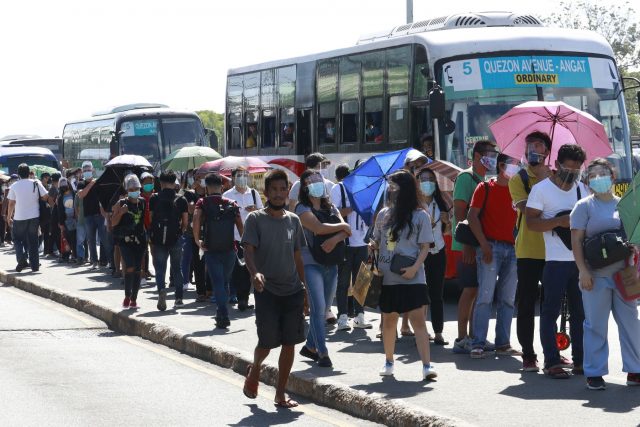BOGOTA/RIO DE JANEIRO — Huddled over a red tablet on loan from their school, Mercedes Ortiz’ two children study from their home in a hillside slum outside Bogota — a novelty for the family after several coronavirus disease 2019 (COVID-19) lockdowns without internet access or tech devices.
“With schools closed for the year, my son and daughter have missed out on their education as I only have internet access on my mobile phone when I have data,” said Ms. Ortiz, a Venezuelan migrant who came to the Colombian capital three years ago.
The pandemic has exposed a deep digital divide — defined as the gap between those who have reliable and affordable broadband internet access and devices like tablets, smartphones, and computers, and those with none or limited access.
Across Latin America and the Caribbean, three in 10 people — 244 million — have no internet, according to a 2020 study by the Inter-American Development Bank (IDB) that examined 24 of the region’s 33 countries.
The pandemic has meant people without tech or internet, particularly migrants and people in rural areas and slums, have struggled to work remotely, access online classes and medical appointments or register for government subsidies.
But COVID-19 has also spurred government action in the region to bridge the digital divide and ensure more people, like the Ortiz family, have access to digital services.
“It’s not just the awareness but also the understanding that governments need to wake up and do something,” said Shamika Sirimanne, head of technology and logistics at the UN’s trade and development body (UNCTAD).
“This is like a tipping point,” she said.
NEW LAWS
In Colombia, a law passed in July declared the internet an “essential public service,” meaning that “its importance and necessity for Colombians is comparable to that of water, electricity and gas,” Colombian President Ivan Duque has said.
The law obligates telecoms operators to guarantee customers internet service and provide minimum browsing and free text packages during health and other emergencies.
This follows a similar law passed in Chile and a decree announced in Argentina last year making the internet “a public service” during COVID-19 lockdowns.
Peru, Brazil, and Argentina are all mulling laws that would make the internet an essential public service, according to World Bank tech expert Doyle Gallegos.
“This all really started last year in Latin America,” said Gallegos, lead digital development specialist at the World Bank.
“It’s really a proclamation that providing internet access to all citizens is critical and a high priority for the government,” he said.
In the United States, a bipartisan group of senators and the White House are debating extending a program to help lower-income Americans get broadband access by folding it into the $1.2 trillion infrastructure package passed this month.
The pandemic has also prompted countries, including Peru, Argentina, Chile, and Colombia to introduce other measures to boost free internet access.
This has included lending free tablets to teachers and students, expanding free WiFi hotspots in public spaces, and “zero-rated” services where certain government, health and education sites and applications are not counted against a user’s data limits.
During the pandemic, regulators and governments changed regulations “basically at the stroke of a pen” to ensure people were not shut off from internet services, Mr. Gallegos said.
“For too long, access to the internet and devices, such as smartphones and laptops, have been seen as not essential, and even in cases, as luxury services,” he added.
New laws declaring the internet as a basic service are “good beginnings,” but must be backed by measures to lower the high cost of internet services in low-income countries, said the UN’s Ms. Sirimanne.
“If you don’t have internet access, you don’t have a digital economy,” she said. “You are cut off from the productive sector.”
According to the UN, 1 gibabyte of data should cost no more than 2% of an average monthly income for internet to be affordbable, but in countries like Colombia, internet access can cost more than 10% of the monthly income of the country’s poorest citizens.
In Brazil, Congress passed a law in February that would transfer about R$3.5 billion ($650 million) for states to provide internet access to poor public school students by buying them data plans and tablets.
“We have 18 million students in social vulnerability, and six million that cannot attend (online) classes because they lack internet access,” Israel Batista, one of several opposition congressmen who helped draft the bill, told the Thomson Reuters Foundation.
But Brazil’s far-right president Jair Bolsonaro vetoed the law in May — a move later overturned by Congress — and then challenged it before the Supreme Court.
In August, Mr. Bolsonaro issued a decree that indefinitely delays federal funds for internet access being transferred to states.
“What (Bolsonaro) wants is to postpone (the transfer) as much as possible, because if by the end of December the states haven’t spent it, they need to return it,” said Luis Claudio Araujo, a constitutional law professor at Brazil’s Ibmec university.
Brazil’s economy and education ministers have warned Congress about the financial risks of the law, a spokesperson for the education ministry said in a statement.
The government “spared no efforts in attempts to universalize internet access to students who need these public policies”, they said.
FEW INCENTIVES
The pandemic has highlighted the stark digital divide between rural and urban areas, but also between city dwellers in affluent neighborhoods and those living in slums, Mr. Gallegos said.
In many big South American cities, there is good 4G internet coverage but poor residents can rarely afford to get online, he added.
“The digital inclusion problem is not just urban versus rural but it’s high-income versus low-income, it’s gender- related, it’s disability-related,” he said.
Governments forming partnerhips with private telecoms companies and providing financial incentives, like tax breaks, to build infrastructure in rural areas can help bridge the digital divide, Mr. Gallegos said.
“A stronger relationship between both the private and public is what really is going to make a difference and create internet access for all,” he explained.
Tech entrepreneur Charvel Chedraui, who founded Wayru — an internet service provider start-up — said Latin America’s telecoms companies view expanding internet access in rural areas as too risky and costly.
Investing in internet infrastructure, such as fiber optic cables, antennae and cell towers with 5G, is rarely profitable, he said, so governments need to step in.
“If governments don’t put the infrastructure and funding in place, then it’s just talk,” said Mr. Chedraui. — Anastasia Moloney and Fabio Teixeira/Thomson Reuters Foundation















